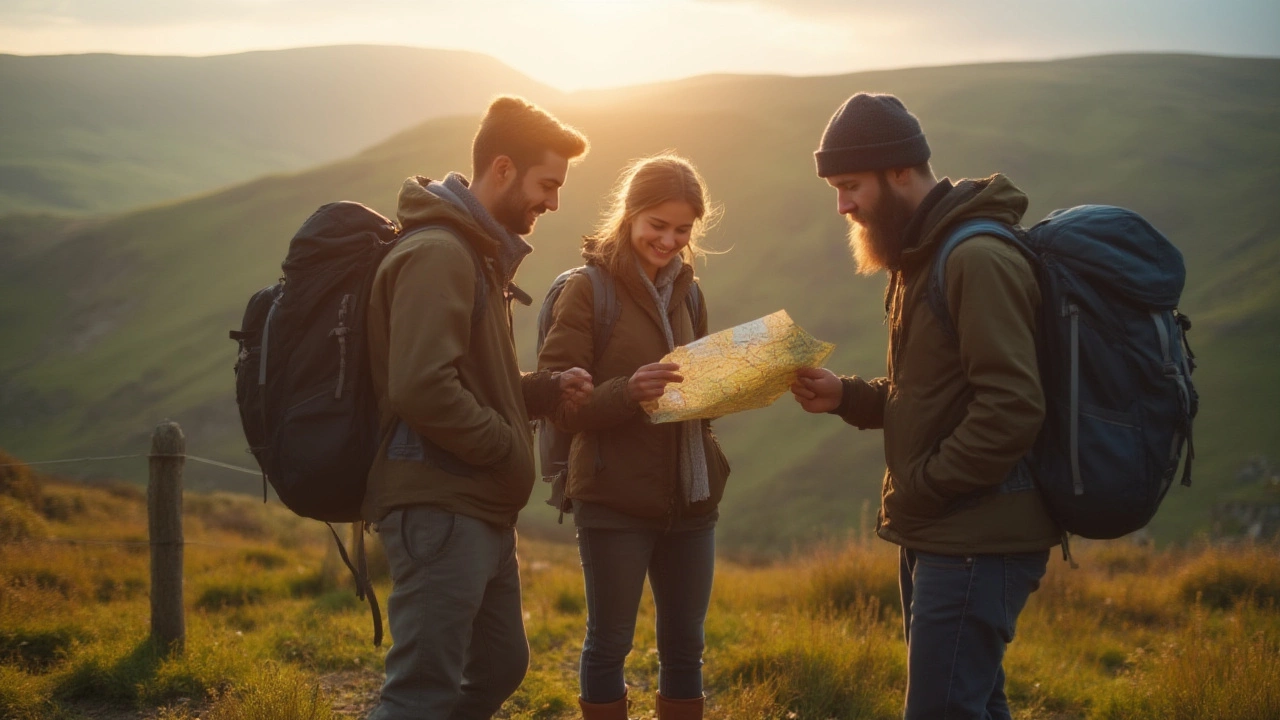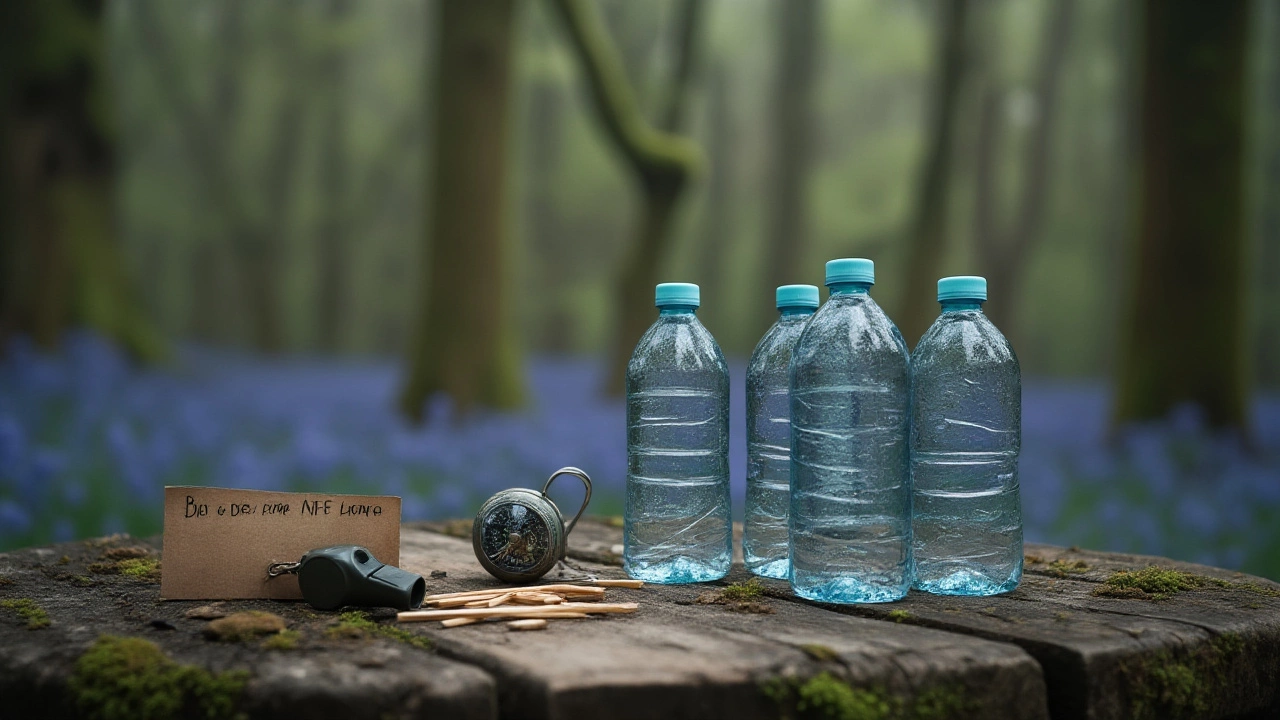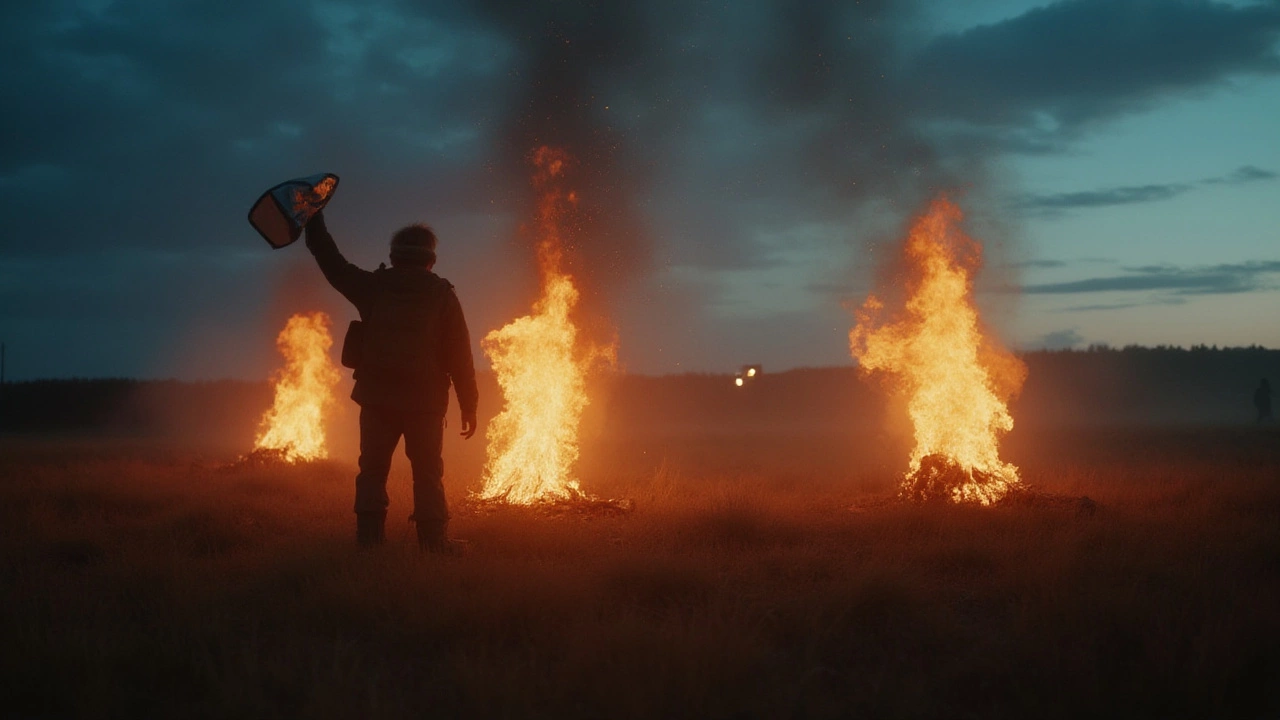Understanding the Rule of Three Camping: Survival Tips and Best Practices
 Jul, 10 2025
Jul, 10 2025
If you’ve ever chatted with a seasoned camper after sunset, there’s a good chance the phrase “Rule of Three” has come up. Strange, right? Why do rules always come in threes? It’s not just a catchy pattern—out there in the wild, it can seriously mean the difference between a safe, fun trip and a major misadventure. This isn’t one of those campfire myths told by someone’s overly dramatic uncle. The Rule of Three is a survival concept everyone from forest rangers to expert wild campers lives by—because nature doesn’t care how many gadgets you packed. It’s got its own rules, and this one should be top of your list if you want to keep trouble at bay.
The Origin and Meaning of the Rule of Three in Camping
The “Rule of Three” in camping boils down to nature’s not-so-gentle reminders about human limits. Basically, it helps you remember how long you can manage without essentials like air, shelter, and water in an emergency. The classic version goes like this: You can survive three minutes without air, three hours without shelter in harsh conditions, three days without water, and three weeks without food. Kind of grim? Maybe. Life-saving? Absolutely. Hikers, scouts, and even search-and-rescue teams rely on this model because it puts your real-time needs in sharp focus. Run out of air, and nothing else matters. Get too cold or too hot—shelter jumps up fast on the priorities list. And if you think you can tough it out for days without water, let’s just say you’re not likely to enjoy that story around the next campfire.
The rule probably didn’t pop up out of thin air. Survival instructors trace the idea back to real-world observations, rather than any ancient camping manual. “People have been learning these limits the hard way since humans started wandering the woods,” says author and outdoorsman Dave Canterbury in his survival classic. Modern camping manuals, Scout guides, and military survival courses all include some variation of the rule—because it’s simple to remember, especially when your brain is in panic mode.
This rule isn’t about hyping up fear; it’s meant to calm your inner voice, to say, ‘Okay, what do I actually need first?’ Under stress in the wild, that kind of checklist can be the difference between quick thinking and costly mistakes. Nature can turn on you fast. The Rule of Three gives you something steady to stand on, no matter what gear you’re hauling or what plans you had on your app. Remember, when the chips are down, nature’s rules win every time.
Breaking Down the Rule: Air, Shelter, Water, Food
Let’s break down these essential human needs through the Rule of Three lens. First up, air. You won’t see this as a daily worry unless you’ve had a tent fill with smoke or a mishap at higher altitudes, but remember: three minutes without air, and your odds drop fast. Maybe not the “usual” camping issue, but if you’re in a wildfire zone, snow cave, or caught underwater, knowing your limits isn’t just trivia—it’s vital.
Shelter comes next, sitting at three hours. Sounds generous until a cold snap or sudden rain hits. Most people underestimate how quickly you can tip into hypothermia or heatstroke in wild places. Hypothermia doesn’t wait for nightfall; get soaked in a summer thunderstorm at 10,000 feet, and suddenly those three hours feel like a countdown. You want to have ways to protect yourself from the worst. A tarp, emergency blanket, insulated clothing, or knowing how to build a quick lean-to from branches can move you from ‘in trouble’ to ‘safe enough for now.’
Three days without water doesn’t sound too bad until you’ve actually experienced it. Dehydration sneaks up—headaches, dizziness, cramping—out in the wild, it saps your brain and survival skills both. Forget food for a while if you must, but water is the priority. Always carry more than you think you’ll need, and always know where to find more. Rivers dry up, streams move underground, and springs vanish in late summer. Water filters or purification tabs aren’t just for hardcore survivalists—they’re insurance, especially if you’re wandering off-grid.
Food sits at the end of the list. Three weeks without it? In all honesty, you won’t be comfy or happy, but it’s rarely the first domino to fall in a crisis. The energy stores you already have can get you through most unexpected detours. There’s a reason most ancient survival wisdom doesn’t focus on hunting first—it’s about staying sheltered and hydrated until you can think straight and move deliberately. Like Dave Canterbury says:
"Survival is not about being comfortable. It's about staying alive until you can get help or rescue yourself."
Focusing on these “threes” can shape every aspect of your camping prep. When you pack, ask: Do I have the means to breathe, shelter, and hydrate if things go wrong? Anything else is extra until you’ve nailed those. It’s not about lugging a bunker’s worth of supplies. It’s about priorities, ranked by what your body can actually handle.

Applying the Rule: Real-Life Scenarios Every Camper Should Know
How does the Rule of Three work if something actually goes wrong? Let’s say you take a wrong turn hiking the Brecon Beacons and lose the trail near dusk. It’s raining, temps are dropping, and your phone’s battery is toast. Panic wants you to run. The Rule of Three says: stop, think, and prioritise. First—are you breathing and uninjured? Good. Next, shelter. That’s now a ticking clock. Grab your poncho or emergency blanket, or use a tarp to block that rain. Find natural cover—under trees, next to a rockface—so you’re losing less body heat. Only when you’re sheltered do you start thinking about water and, much later, food.
Another scenario: on a beach camping trip, someone misjudges the tide and your tent ends up splashed and your gear soaked. Suddenly, you’re chilly and desperate to get dry. Again, shelter is the priority. Strip off wet clothes, get under something dry, and use body heat and insulation to warm up before worrying about dinner or even water. Nighttime can play tricks on your sense of priorities, but the Rule of Three gives you something reliable.
I can’t count how many times I’ve heard stories from friends who ran short of water on long summer hikes, only to end up sluggish and miserable the next morning. “Three days” doesn’t mean you won’t feel effects before then—don’t push your luck. In our own trips—especially when Lillian asks ‘Did you pack the water filter?’—the Rule of Three has saved us from a dozen small disasters. Losing a meal is an annoyance. Losing water or shelter? Much riskier.
The real genius of this rule is its adaptability. Maybe you’re on a luxury campsite with full facilities—then it’s just something to keep in mind. But as soon as you step off the beaten track, nature resets the board. Your best friend is the ability to pause and ask: is my air, shelter, and water sorted? The rest is icing. That kind of calm, matter-of-fact self-audit is what keeps even experienced campers from making rookie mistakes when things go sideways.
How to Train Yourself: Rule of Three Camping Tips and Tricks
Learning survival priorities doesn’t have to be a grim bootcamp. Start with mini-challenges next time you camp. Try setting up a basic tarp shelter in under ten minutes, or practice finding and treating water from a nearby stream. Test how long your power bank actually lasts if you’re map-checking all day. These “practice runs” make the Rule of Three second nature—so if trouble hits, you don’t freeze up or forget the basics.
Packing is everything. Create a “Big Three” checklist before you leave: breathing aid (whistle, inhaler if you need it), two forms of shelter (tent AND emergency blanket), and at least one more water source than you think you need (filtered bottle, purification tabs, or backup jerry). Build redundancy for these three—meaning if you drop one, you’ve got a fallback. Tuck an emergency blanket into every bag. Don’t assume your travel buddy remembered the water filter—confirm it.
Another tip: learn natural shelter tricks. Pine branches are great insulation, rock faces can block wind, and clearing leaves off the ground keeps you dry. Learn to spot signs of clean water—moving fast, clear, uphill—and how to treat it quickly. Every trip is a new chance to practice. When you bring newbies, explain the Rule of Three up front. It’s not to scare anyone, just to keep everyone thinking straight if things go bad fast.
There’s a mental aspect too. The first time you really get cold or thirsty outdoors, panic wants to take the wheel. Practicing these drills when you’re safe and relaxed means if adrenaline does kick in, you’ve already done it before. And yes, people even use the Rule of Three at home during power cuts and storms: check air, grab blankets, fill water jugs, then order a pizza. Same logic, safer outcome!

Myths, Missteps, and Smart Upgrades to the Rule
Let’s bust some myths. Some folks think the Rule of Three means you can “safely” go those full three days without water or three weeks without food. Don’t fall for it. The numbers aren’t guarantees—they’re outside limits. Especially with water and shelter, you’ll run into trouble long before the clock runs out. Dehydration hits fast if it’s hot, dry, or especially windy. You can lose water through sweat even on cloudy days. And with shelter, mild hypothermia can begin in a matter of minutes if you’re wet and winds pick up.
Another trap: over-packing because you’re worried about every possible scenario. The Rule of Three isn’t about lugging a five-star suite on your back. It’s about what you need to stay alive, not comfortable. There’s freedom in paring down—focus gear and skills on what’s actually important, and save your backpack space for snacks or an extra dry shirt.
If you want to “upgrade” the rule, start keeping a sharp eye on weather, altitude, and group fitness before you set out. The Rule of Three holds up, but these factors shrink—or expand—your true window a lot. For folks with asthma, three minutes without air might be a stretch. If you’re camping with kids or older family, recalibrate. Don’t just assume the rule covers everyone equally—adjust your plans to match real people, not hypothetical ones.
Bring it into your daily planning. Whenever you check a packing list or plot your route, run through the Rule of Three. What if weather turns? What if we lose the trail? Who in the group has medical needs? Even a moment’s prep time will save hours of panic or regret later on. As with any tool, its real power comes from practice and actually thinking through the logic behind it.
So next time you’re deep in the woods, look up at the sky, breathe easy, and run the world’s simplest, smartest checklist: air, shelter, water, food. Nature loves to test us. The Rule of Three is how you ace her pop quiz—no cram session required.